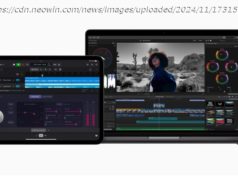AMD becomes the first major GPU vendor to release a new model in 2022, and it comes to us in the form of a new lower-end part: Radeon RX 6500 XT. This latest Radeon slots into the $199 price-point, but while it’s a…
AMD becomes the first major GPU vendor to release a new model in 2022, and it comes to us in the form of a new lower-end part: Radeon RX 6500 XT. This latest Radeon slots into the $199 price-point, but while it’s a more modest part, there’s still quite a bit to talk about. Let’s dig in and see how it performs against AMD’s and NVIDIA’s current-gen lower-end cards. With its new Radeon RX 6500 XT ( and RX 6400), AMD becomes the first major graphics vendor to release a new product in 2022, and among the current generation, it’s also the first to offer a solution priced at $199. In the current market, where graphics cards have endured shortages and high pricing since the launch of the latest-gen architectures, AMD hopes a card like the RX 6500 XT, with its 4GB frame buffer, will be more likely to find their way into the hands of gamers, not cryptocurrency grifters. With that 4GB frame buffer, the RX 6500 XT is going to be best-suited for 1080p resolution, something also dictated by its placement in AMD’s overall lineup. With this launch, AMD’s current-gen RDNA2 series moves up to eight models total, although the eighth, RX 6400, is OEM-only. That’s probably fine, since the RX 6500 XT offers considerably better specs for DIYers. Over the previous few generations from AMD, we’ve seen its $199 option revolve around a model that’s been available in either a 4 or 8GB flavor, but the RX 6500 XT looks to become hinged on 4GB. This raises a number of inevitable comparisons, because in some ways, this new AMD GPU has design cues that need to be discussed. But, before we get into that, here’s a quick look at AMD’s current-gen Radeon lineup: It might have taken about 14 months, but it’s nice to see AMD’s current-gen lineup fleshed out like this, with an offering for most expected price-ranges. The OEM-only RX 6400 shaves a quarter of the cores off of the RX 6500 XT, but it also spec’d at half the power, so we’d expect to see it land itself into smaller form-factor prebuilts, where cooling can be simpler. As for the RX 6500 XT, there’s more worth talking about than what can be gleaned from the earlier specs table. As mentioned above,1080p is going to be the ideal target resolution here, but because of the overall performance the card offers, and its frame buffer size, anyone who owns one will need to get used to tweaking graphics detail in order to achieve a good blend of image quality and performance. We did see the 4GB frame buffer cause larger-than-expected drops in performance vs. the 8GB RX 6600 than we’d expect, and you can see those results in a little bit. Having a 4GB frame buffer isn’t likely to be a detriment unless you have higher-end gaming demands. AMD has technologies to help improve things without any extra hardware, such as its FidelityFX Super Resolution feature, which is finding itself in more games all of the time. With it, you may be able to use higher-end graphics settings, and have the game render at a lower resolution in order to hit your desired performance. We’ll talk more about this later in the review. One last caveat to be aware of with the RX 6500 XT is its lack of an AV1 decoder, as well as AVC/HEVC encoders. The latter means that you can’t use the GPU for accelerated encoding, which is a bit of a downer, considering the $199 Radeon in 2016 (RX 480 4GB) included that capability. Interestingly, during its briefing for this card, AMD drew specific attention to the RX 570, which it claims is still one of the most used GPUs today (along with NVIDIA’s GeForce GTX 1650). So it’s a little strange, then, that those who upgrade from the RX 570 to RX 6500 XT will suddenly lose their accelerated video encoders. Of course, whether that lacking feature impacts you will depend on whether or not you encode videos to begin with, or intend to stream your gaming. One last thing worth pointing out is that the RX 6500 XT appears to include only one DisplayPort and one HDMI connector on each card, although it’s possible some vendors will shake things up. Our GIGABYTE sample, dubbed Eagle, requires just one 6-pin power connector, which is something else we’d expect to be a common trait.






